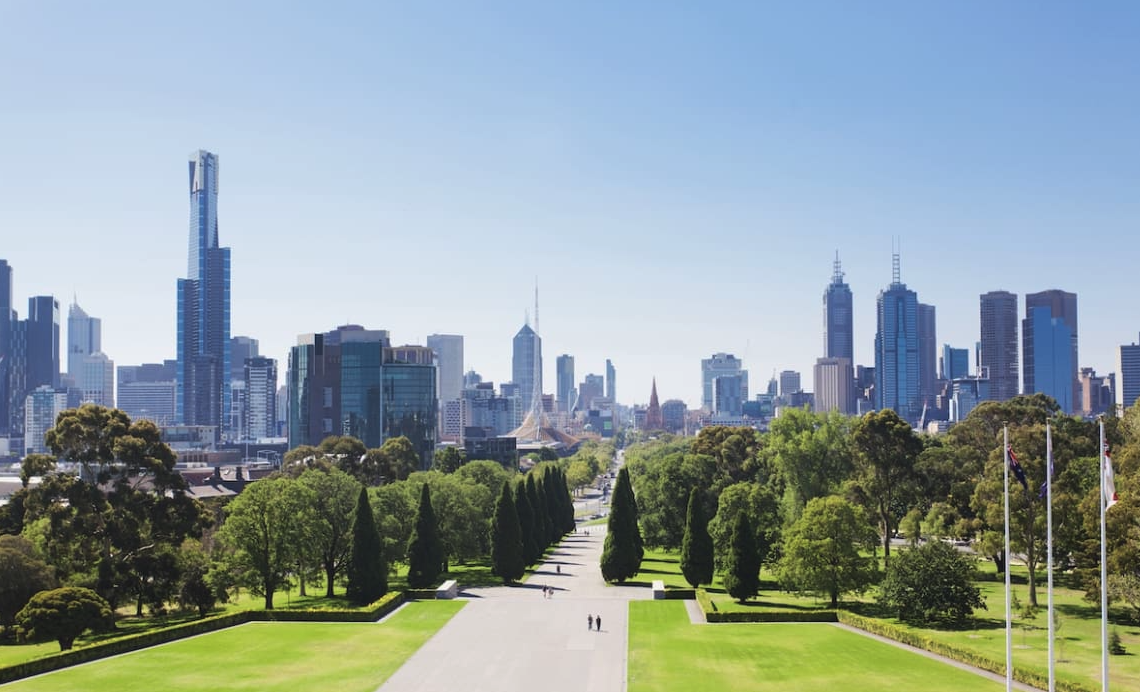TikTok Refugees Find an Alternative—in China
Chinese users of Xiaohongshu, or Little Red Book, welcome Americans fleeing a feared TikTok ban
They call themselves TikTok refugees—and the app they are fleeing to is a lot more Chinese than the video-sharing app whose U.S. fate now hangs in the balance.
After Supreme Court justices Friday seemed inclined to let stand a law that would shut down TikTok in the U.S., the Chinese social-media platform Xiaohongshu , translated in English as Little Red Book, has received a flood of American TikTok users. They are looking for a sanctuary or a way to protest the potentially imminent TikTok ban—never mind that they don’t speak Chinese.
Charlotte Silverstein, a 32-year-old publicist in Los Angeles, downloaded Xiaohongshu on Sunday night after seeing videos on TikTok about migrating to the app, which Americans dubbed “RedNote.” She described the move as a “last act of defiance” in her frustration about the potential TikTok ban.
“Everyone has been super welcoming and sweet,” said Silverstein, who has made three posts so far. “I love the sense of community that I’m seeing already.”
By Monday, TikTok refugees had pushed Xiaohongshu to the top of the free-app chart on Apple ’s App Store.
“I’m really nervous to be on this app, but I also find it to be really exciting and thrilling that we’re all doing this,” one new Xiaohongshu user said in a video clip on Sunday. “I’m sad that TikTok might actually go, but if this is where we’re gonna be hanging out, welcome to my page!” Within a day, the video had more than 3,000 comments and 6,000 likes. And the user had amassed 24,000 followers.
Neither Xiaohongshu nor TikTok responded to requests for comment.
The flow of refugees, while serving as a symbolic dissent against TikTok’s possible shutdown, doesn’t mean Xiaohongshu can easily serve as a replacement for Americans. TikTok says it has 170 million users in the U.S., and it has drawn many creators who take advantage of the app’s features to advertise and sell their products.
Most of the content on Xiaohongshu is in Chinese and the app doesn’t have a simple way to auto-translate the posts into English.
At a time of a strained U.S.-China relationship, some new Chinese-American friendships are budding on an app that until now has had few international users.
“I like that two countries are coming together,” said Sarah Grathwohl, a 32-year-old marketing manager in Seattle, who made a Xiaohongshu account on Sunday night. “We’re bonding over this experience.”
Granthwohl doesn’t speak Chinese, so she has been using Google Translate for help. She said she isn’t concerned about data privacy and would rather try a new Chinese app than shift her screentime to Instagram Reels.
Another opportunity for bonding was a photo of English practice questions from a Chinese textbook, with the caption, “American please.” American Xiaohongshu users helped answer the questions in the comments, receiving a “thank u Honey,” from the person who posted the questions.
By Monday evening, there have been more than 72,000 posts with the hashtag #tiktokrefugee on Xiaohongshu, racking up some 34 million views.
In an English-language post titled “Welcome TikTok refugees,” posted by a Shanghai-based Xiaohongshu user, an American user responded in Chinese with a cat photo and the words, “Thank you for your warm welcome. Everyone is so cute. My cat says thanks, too.” The user added, “I hope this is the correct translation.”
Some Chinese users are also using the livestreaming function to invite TikTok migrants to chat. One chat room hosted by a Chinese English tutor had more than 179,900 visits with several Americans exchanging cultural views with Chinese users.
ByteDance-owned TikTok isn’t available in China but has a Chinese sister app, Douyin. American users can’t download Douyin, though; unlike Xiaohongshu, it is only accessible from Chinese app stores.
On Xiaohongshu, Chinese users have been sharing tutorials and tips in English for American users on how to use the app. Meanwhile, on TikTok, video clips have also multiplied over the past two days teaching users the correct pronunciation of Xiaohongshu—shau-hong-SHOO—and its culture.
Xiaohongshu may be new to most Americans, but in China, it is one of the most-used social-media apps. Backed by investors like Chinese tech giants Tencent Holdings and Alibaba Group , Xiaohongshu is perhaps best described as a Chinese mix of Instagram and Reddit and its users increasingly treat it as a search engine for practical information.
Despite its Little Red Book name, Xiaohongshu has little in common with the compilation of Mao Zedong ’s political writings and speeches. In fact, the app aspires to be a guidebook about anything but politics.
Conceived as a shopping guide for affluent urbanites in 2013, Xiaohongshu has morphed into a one-stop shop for lifestyle and shopping recommendations. Every day, its more than 300 million users, who skew toward educated young women, create, share and search for posts about anything from makeup tutorials to career-development lessons, game strategies or camping skills.
Over the years, Xiaohongshu users have developed a punchy writing style, with posts accompanied by images and videos for an Instagram feel.
Chinese social-media platforms are required to watch political content closely. Xiaohongshu’s focus on lifestyle content, eschewing anything that might seem political, makes it less of a regulatory target than a site like Weibo , which in 2021 was fined at least $2.2 million by China’s cyberspace watchdog for disseminating “illegal information.”
“I don’t expect to read news or discussion of serious issues on Xiaohongshu,” said Lin Ying, a 26-year-old game designer in Beijing.
The American frenzy over a Chinese app is the reverse of a migration in recent years by Chinese social-media users seeking refuge from censorship on Western platforms , such as X, formerly known as Twitter, or, more recently, BlueSky.
Just like TikTok users who turn to the app for fun, Xiaohongshu users also seek entertainment through livestreams and short video clips as well as photos and text-posts on the platform.
Xiaohongshu had roughly 1.3 million U.S. mobile users in December, according to market-intelligence firm Sensor Tower, which estimates that U.S. downloads of the app in the week ending Sunday almost tripled compared with the week before.
Sensor Tower data indicates that Xiaohongshu became the top-ranked social-networking and overall free app on Apple’s App Store and the 8th top-ranked social app on the Google Play Store on Monday, “a feat it has never achieved before,” said Abe Yousef, senior insights analyst at Sensor Tower.
Run by Shanghai-based Xingin Information Technology, Xiaohongshu makes money primarily from advertising, according to a Xiaohongshu spokeswoman. The company was valued at $17 billion after its latest round of private-equity investment in the summer, according to research firm PitchBook Data.
Not everyone is singing kumbaya. Some Chinese Xiaohongshu users are worried about the language barrier. And some American TikTok users are concerned about data safety on the Chinese app.
But many are hoping to build bridges between the two countries.
“Y’all might think Americans are hateful because of how our politicians are, but I promise you not all of us are like that,” one American woman said on a Sunday video she posted on Xiaohongshu with Chinese subtitles.
She went on to show how to make cheese quesadillas using a waffle maker.
The video collected more than 11,000 likes and 3,000 comments within 24 hours. “It’s so kind of you to use Chinese subtitles,” read one popular comment posted by a user from Sichuan province.
Another Guangdong-based user commented with a bilingual “friendly reminder”: “On Chinese social-media platforms please do not mention sensitive topics such as politics, religion and drugs!!!”
 Copyright 2020, Dow Jones & Company, Inc. All Rights Reserved Worldwide. LEARN MORE
Copyright 2020, Dow Jones & Company, Inc. All Rights Reserved Worldwide. LEARN MORE
A divide has opened in the tech job market between those with artificial-intelligence skills and everyone else.
A 30-metre masterpiece unveiled in Monaco brings Lamborghini’s supercar drama to the high seas, powered by 7,600 horsepower and unmistakable Italian design.
A 30-metre masterpiece unveiled in Monaco brings Lamborghini’s supercar drama to the high seas, powered by 7,600 horsepower and unmistakable Italian design.
When Lamborghini takes to the water, subtlety isn’t on the agenda. Unveiled at the Monaco Yacht Show, the Tecnomar for Lamborghini 101FT is a 30-metre superyacht that fuses Italian automotive theatre with cutting-edge naval engineering.
The model builds on the collaboration that began in 2020 with the Tecnomar for Lamborghini 63, a sell-out success that celebrated the marque’s founding year.
This new flagship pushes the partnership between Automobili Lamborghini and The Italian Sea Group to a grander scale, designed to deliver the same adrenaline rush at sea that drivers expect behind the wheel.
“The Tecnomar for Lamborghini 101FT redefines the concept of nautical luxury,” said Stephan Winkelmann, Chairman and CEO of Automobili Lamborghini.
“It is not only a yacht, but an affirmation of Italian excellence. The Italian Sea Group and Automobili Lamborghini share an exclusive clientele who are passionate about beauty, technology, and extreme performance.”
Design cues are unmistakably Lamborghini. The yacht’s sharp exterior lines echo the Fenomeno supercar revealed at Monterey Car Week, complete with Giallo Crius launch livery and signature Y-shaped lighting.
Inside, the cockpit and lounges mirror the DNA of Sant’Agata supercars through hexagonal motifs, sculptural seating and dramatic contrasts. With accommodation for up to nine guests and three crew cabins, indulgence meets practicality on every deck.
Performance is equally uncompromising. Three MTU 16V 2000 M96L engines and triple surface propellers generate a combined 7,600 horsepower, driving the yacht to 45 knots at full throttle, with a cruising speed of 35 knots. Two 35 kW generators provide additional efficiency and reliability, ensuring the yacht’s power matches its presence.
Mitja Borkert, Lamborghini’s Design Director, said: “With the Tecnomar for Lamborghini 101FT, we aimed to create a product that embodies the main design characteristics of our super sports cars. All the details, from the exterior to the colour, to the interior areas, recall and are inspired by Lamborghini’s DNA.”
Presented in scale at Monaco, the definitive Tecnomar for Lamborghini 101FT is scheduled to hit the water at the end of 2027. For those who demand their indulgence measured not only in metres but in knots, this is Lamborghini’s most extravagant expression yet.
On October 2, acclaimed chef Dan Arnold will host an exclusive evening, unveiling a Michelin-inspired menu in a rare masterclass of food, storytelling and flavour.
BMW has unveiled the Neue Klasse in Munich, marking its biggest investment to date and a new era of electrification, digitalisation and sustainable design.





























